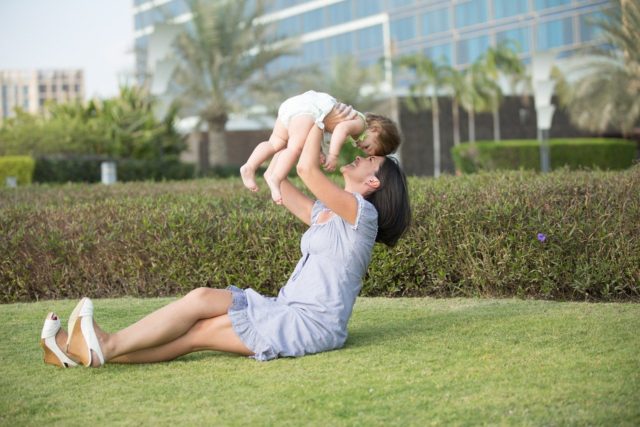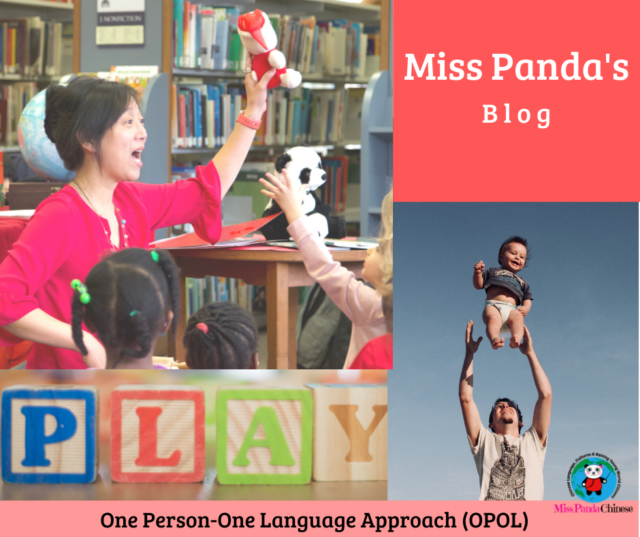one person one language (OPOL) approach

When I met Annie at a party, she was about three years old. Her Dad’s native language is English and her mother’s native language is French. Both parents are fluent in each other’s native language. The Dad only speaks English to Annie and the mother only spoke French. She is now in college and is bilingual in English and French, although dominant in English. Her parents used the one person-one language (OPOL) approach when they started the bilingual family journey.
I met Justin, a two-year-old at an event. His father is a native English speaker who is quite fluent in Chinese. Justin’s mother is a native Chinese speaker. Justin’s dad speaks Chinese to him so does his mother. However, his Dad told me that he is the parent who also speaks English to Justin when needed. This family uses a version of OPOL that fits their current needs.
This approach is suitable for
-
One or both parents who have conversational fluency in a second language.
-
One or both parents who have conversational fluency in a heritage language.
-
One or both parents are native speakers of their home country languages.
-
A family has a child-caregiver who has high proficiency or is a native speaker of the family’s desired target language. (ex. grandparents, au-pair, private educator caregiver)
OPOL is a popular approach used with kids who are acquiring two languages at the same time. That means each parent uses his/her language with the child.
Example #1, the father speaks English and the mother speaks Mandarin.
Another example, the caregiver speaks Mandarin and the parents speak English.
Example #3 (a variation), the grandparents who live in the same household speak Mandarin, and the parent with conversation proficiency also uses some Chinese.
Parents find this approach appealing while raising a bilingual child at a very young age. However, as the child engages in more community activities and enters school questions and problems may appear due to the balance of the language input of the two languages.
Therefore, there can be a shift in the approach to fit the needs of a family. It is important to grow with your children, keep their curiosity about the target language, and guide them to experience the joy of learning. OPOL is a method and you can adjust it. You can decide where to add flexibility so it is comfortable for you and your family.
For family members, such as in-laws who don’t understand the target language, a conversation with them about your and your spouse’s goal and intention of raising bilingual/multilingual children can be helpful.
Be open about it. Ask them for support and ask if they feel comfortable when you speak the target language with the children when they are around. Provide a solution, such as you can interpret what you say in their language so they can understand the conversation you have with the kids. Family harmony helps kids to connect with grandparents from both sides.
A question that arises often – What language do I use when I am out and about with my child? I stick with the target language (Mandarin). I also recommend parents to stick to the target language. Adults notice the reaction from the environment easily and can feel it is out of their comfort zone at the beginning. It’s a practice. The more you do it the more comfortable you are.
When my young kids reminded me, “Mom, you should speak Chinese!” for the first time in public I was surprised. But, for them, it is our family’s life style and I, the mother, should keep it that way. Kids amaze me. Always!
Do you find OPOL, the One Person-One Language approach works with your family What are some concerns you have if you adopt it?
We talk about “thank you” and “I am grateful for…” in the latest Playful Chinese podcast. I hope you can join in and use these expressions during the holiday season and beyond. Thank you for being a part of this bilingual family community.
Read more in the Teach Your Child A Second Language series:
Start with Songs And Music
Incorporate Everyday Expressions
Have Fun With Games
Create A Routine
Engage The Senses
Keep A Happy Mindset
Image by pixabay
